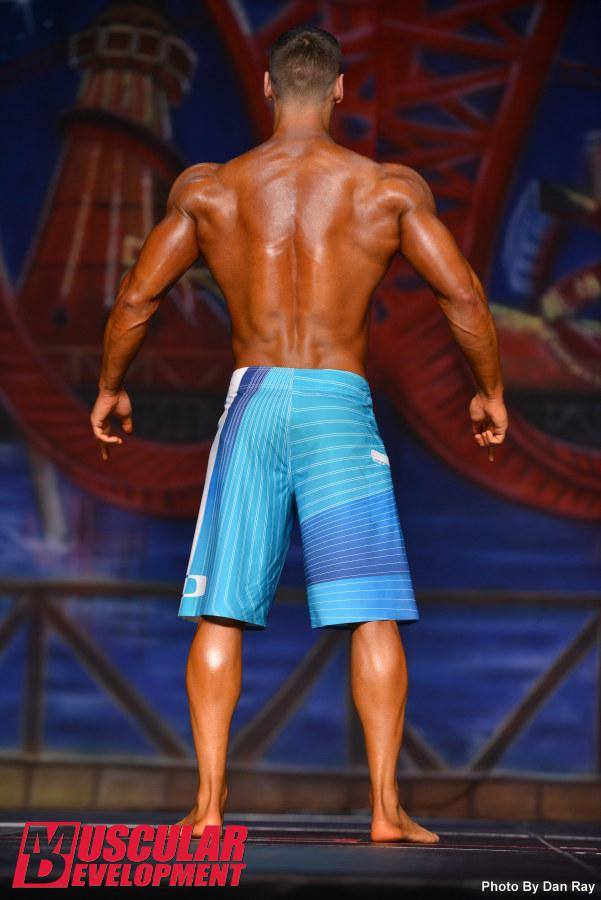Ever since
I wrote this blog about fitness model photo shoots, I’ve received a number of questions from guys who either want to be Physique competitors, or at least look like one.
A few years ago I would’ve scoffed at them. Physique competitions? That’s for pretty boys who are scared to squat and can’t place in real bodybuilding. Then I would’ve kicked sand on them and said something mean about their mothers on Facebook.
Now I sing a different tune. Some of these guys have incredible physiques that could easily do “damage” in actual bodybuilding shows, even without the board shorts.
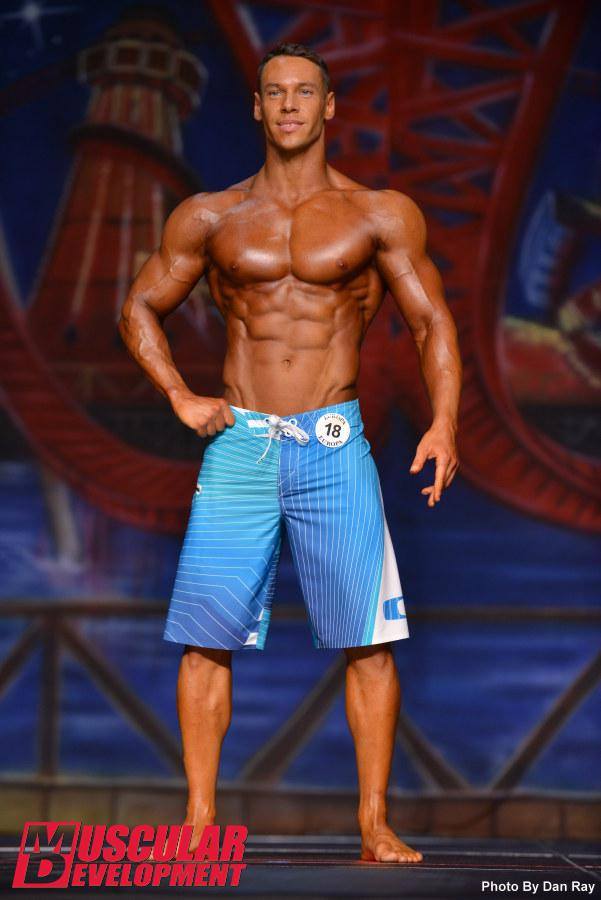
I’ve learned that some guys choose to compete in Physique competitions rather than bodybuilding as it:
• Is less demanding than bodybuilding in terms of the sheer size and conditioning required.
• Has an increasing number of opportunities to compete, and do well.
• Rewards being a handsome, photogenic SOB, which may be more in line with how they want their body to look and feel.
I’ve come to know and train with a few very good Physique competitors and fitness models here in NYC and I’m always impressed by their work ethic and attention to detail, especially with diet.
These guys certainly hit their macros and seemingly never have an off day, much less an off season.
Training wise, they’re no slouches either. While I don’t see a lot of impressive 1RM’s, I do see hard, high volume training with laser-like focus on what they’re trying to achieve.
However, I’d be lying if I didn’t see a lot of room for improvement — not so much with the guys I know or have worked with on photo shoots, but with some of the up and comers reaching out to me.
This post will attempt to address some obvious things I see being screwed up and opportunities to be better. This won’t be exhaustive obviously, nor will it apply to everyone, but if you’re an aspiring “aesthetic trainee” I think you’ll learn a thing or two.
Training
Most issues I see stem from poor planning. Many physique-minded (or aesthetic-minded) trainees attack their body according to what they see in the mirror — “I need more chest, therefore I must train chest more!”
It makes sense and is really the hallmark of what we do, but at some point you should address things a little more intelligently.
First, while there may be no “off-season” for a camera-ready model or competitive physique competitor (or even just someone who wants to look that way) your training should still have distinct phases.
In the past I’ve split training into blocks — strength, hypertrophy, fat loss, and GPP or transition — each lasting 2-4 months. For someone with pure aesthetic goals, the hypertrophy block would be longer and might include mini 4-week “specialization” cycles that address stubborn body parts one at a time.
Read that again — one body part at a time. So four weeks of shoulders, then four weeks of quads, etc. Trying to bring up more than one body part at a time completely defeats the purpose of specialization. So don’t do it. Be patient.
However, the year’s training (or mesocycle) should still include a bona fide off-season strength block consisting of “movement based” work exclusively while still respecting the goals of the Physique athlete. And this is an area I see a lot of potential for improvement.
Get Strong
Even if your goal is to be a cover model, 3-4 months of focusing on loading the squat, bench press, deadlift, chin-up, etc. — be it modified Westside, Cube, 5/3/1, the Texas Method, or even Starting Strength — can pay huge dividends.
First, it will teach you to recruit the high threshold muscle fibers, something slow tempo work in the hypertrophy ranges just won’t effectively do.
Next, it will allow you to lift heavier weights when you eventually return to your 8-15 rep hypertrophy zone. Lifters often find that the hypertrophy training immediately after a few months of pure strength work can be the most rewarding training of the year.
Finally, it provides a wonderful reprieve from constant “muscle building” work, which can seem like a never-ending quest as changes come so slowly. Strength gains, however, can be seen relatively quickly, especially if you focus on your log book like a laser.
In short, everyone should just chase their training log once in a while.
Now the way to screw this block up is to try to over think and turn it into “hybrid” training. You see this a lot with 5/3/1 logs that feature five different biceps exercises for assistance work.
The trick is, any assistance work in a strength phase should be all about making the bench, squat, and deadlift stronger.
This is a spin on something I’ve learned through talking with Dave Tate, who has forgotten more about strength than I’ll ever know.
It may take some experimentation, but if you find that whenever your incline DB press goes up that your bench press also goes up, then the incline DB press is a good assistance lift for you. So focus on getting your incline DB press strong. The same may apply with front squats to the back squat, glute-ham raises with the deadlift, Kroc rows with the bench press and grip, etc.
So it’s movements that help your big lifts get stronger — not lifts for muscles you enjoy training or feel need extra work.
Apart from this dedicated assistance work, I’d do no other exercises save for abs and whatever “pre-hab” stuff your soft tissue therapist wants you to do. Restorative measures like yoga, martial arts, or dynamic flexibility can round out your off-season training schedule.
A diet adjustment would accompany this strength phase as well, even for the “abs all year” guy. While a physique competitor generally stays on task year round, I’d still include more variety in the off-season. So even if you’re paying close attention to hitting your macro targets, make a point of hitting said numbers with a variety of foods.
Try a new protein once a week or perhaps a new vegetable. See if you can go a month without eating chicken or eggs or oatmeal or any other dieting staple — you’ll expand your palate while mitigating the chance of getting “sick of” a food you eat too often, especially during prep. You might even discover a food for your next diet that you enjoy more than the standard chicken-eggs-oats Holy trinity.
Pressing Example — Strength.
Let’s say it’s the off-season and our Physique competitor is looking to bring up lagging shoulder development.
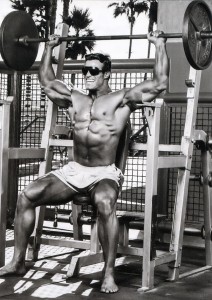
Strength training for shoulders means shoulder pressing. But an issue I have with classic programs like Starting Strength or 5/3/1 is that shoulder pressing combined with bench pressing in the same rotation can wear out some bench press-happy lifters.
This is not a fault with those routines or the barbell shoulder press per se, just poor previous programming choices coming home to roost (10 years of benching twice a week, heavy) or simply lousy genetic shoulder structure. Some just don’t have the room in their shoulder capsule to press overhead consistently without developing problems.
The solution, provided the shoulders are healthy, is to advance through a shoulder pressing progression for 4 workouts each. The following sample framework draws inspiration from shoulder guru Eric Cressey.
Weeks 1-3. Bottoms-Up One-Arm Kettlebell press – 3 x 10-12. Hold contracted position for two seconds.
Weeks 4-6. One-Arm DB Shoulder Press, Neutral Grip – 4 x 6-8. Full ROM; bring biceps to head, not head to biceps.
Weeks 7-9. Seated DB Shoulder Press, Neutral Grip – 5 x 8-10. Don’t “clink” the ‘bells together at the top.
Weeks 10-12. Seated BB Press – 5 x 4-6. Use a Behind the Neck Press if cleared to do so. Barbell touches traps.
Weeks 13-16. Push Press or Standing Press – 6 x 2-4. Explosive here. If push press work up to singles the last two weeks.
- Rest 90-120 seconds between sets.
- For every set of presses do a set and chin-up variations as an A2 exercise.
- Also include 3-4 sets of either face pulls, face pulls + external rotation, prone trap raise, or external rotations.
- Perform 50-100 band pull-aparts every day. I don’t care when.
Pressing Example – Hypertrophy
After 4 months it’s time for hypertrophy. Our physique competitor wants to specialize on shoulder size and shape for 4 weeks. For this phase drop all shoulder pressing (at least stand-alone heavy shoulder pressing) and switch to higher volume, longer time under tension work for the medial and posterior deltoids. This is best accomplished by performing supersets, tri-sets, and giant sets of isolation exercises.
For hypertrophy I like to program one grouping per upper body session, up to 3-4 different exposures per week for a month. Then back off.
Here’s an example for the medial delts. This would be done immediately after training chest:
A1) Seated Dumbbell L-Lateral Raises — 6-8 reps. Rest 10 seconds.
A2) Standing Dumbbell Lateral Raises — 8-10 reps. Rest 10 seconds.
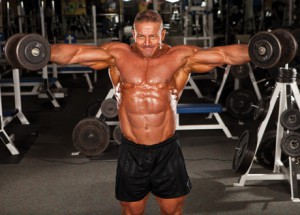
A3) Standing One-Arm Cable Lateral Raise — 12-15 reps. Rest 2 minutes.
Repeat for a total of 3 giant sets.
B) Machine Lateral Raise — 1 x 30-20-15 reps. This is a drop set. Rest 10 seconds between drops.
Perform the following for the posterior delts a few days later immediately after training back:
A1) Prone, Incline DB Rear Delt Raise — 6-8 reps. Hold for 2 seconds at the top. Rest 10 seconds.
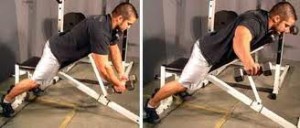
A2) Standing Dumbbell Rear Delt Raise — 8-15 reps. Rest 10 seconds. Can “cheat” the last few reps, cautiously.
A3) Rope Face Pull with External Rotation — 6-8 reps. Hold for 2 seconds at the top. Rest 2 minutes.
Repeat for a total of 3 giant sets.
B) Reverse Pec Dec — 1 x 30-20-15 reps. This is a drop set. Rest 10 seconds between drops.
Use Your Head
This just one small example of how a physique competitor might adjust his training to over the course of an entire year. The point is that even though the greater goal is 100% aesthetic or mirror-based, the programming should be much more involved than just “increase volume of training for what looks small.”
I look forward to your questions. If the response is there I may do future installments covering other body parts like hamstrings, back, etc.
Oh, and definitely calves — something my friend Anton below could use! (Kidding!)
Bryan
